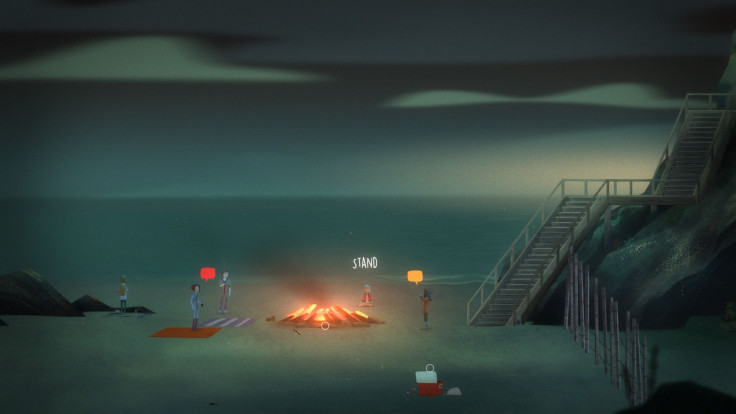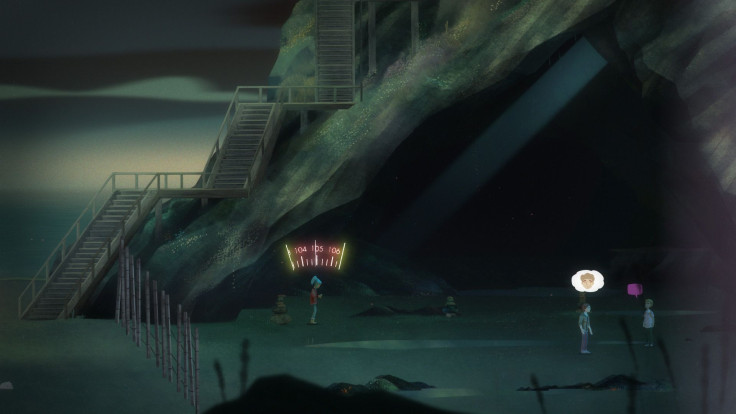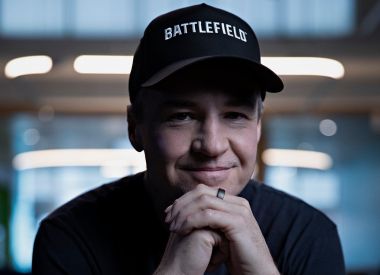Oxenfree first released in early 2016 as a unique indie title in the burgeoning genre of narrative-based experiences. While the game’s January arrival made the title somewhat liable to sneak past the eyes of critics, its story that tests friendships and its encounters with ghosts went on to be nominated for five prodigious industry awards with one notable win for excellent art from the Independent Games Festival.
Earlier this month, Oxenfree came to Nintendo Switch and, since it may be this game’s last iteration for a while, we chatted with Night School Studio Co-Founder Sean Krankel to gain some additional perspective. The first of this three-part feature will unpack how the vision of Oxenfree transitioned from idea to concept.
“In 2013 and 2014 the, Unity [development engine] had really come into its own, and [it offered] the ability for a small team of five, six, seven people to really make something special,” Krankel said. “At the very core, our idea was what if we did a story game with no cutscenes, a game that never takes control away from the player?
“Let's make it so that being silent is absolutely an option, and then we want to empower the player to always feel like what they say is sort of an ability. Everything kind of spawned out from this basic idea of a story game with no cutscenes and no removal of control from the player.”
That concept pushed Oxenfree beyond the scope of its contemporaries, most notable among them being Telltale Games. Players will never leave control of the game’s protagonist, Alex, as she works through her journey of self-discovery, acceptance of loss and, most importantly, her connection to supernatural beings on a spooky island.
“It's not going to be like other branching narrative games where the player has a moment to say something and then a volley between the player and an NPC happens for a while, and then you wait for your chance to jump back in again,” Krankel mused.
In order to make that vision a reality, the small Night School team worked from Krankel's idea of visualizing the game's dialogue system as a physics-based toy.

“That's where the hovering dialogue bubble came from," he revealed. “If communication is going to be your ability, let's have it be as close to the player as possible… On a pure mechanics level it was sort of this thing like, how do we do a Telltale-style branching narrative but make it be fast and make the act of communication a toy.”
The main source of Oxenfree's Telltale flavor comes from Krankel's cousin and Night School Co-Founder Adam Hines. Hines had previously worked on critically acclaimed titles like Tales From The Borderlands and The Wolf Among Us. The duo had always wanted to create something as a team, and personal circumstances ultimately allowed them to bring the Night School team together. With mechanical vision in mind, the next milestone was to craft it around a narrative that made sense.
“The more we thought about it, the more we went back to all the stuff that inspired us as we grew up: ‘80s and '90s coming of age types of stories… Really early on we thought about a game without any supernatural elements like Stand By Me, where you have kids dealing with things that start off feeling pretty innocuous and then it escalates over time.

“But then while we talked about it we were like, ‘this is a really cool opportunity to do supernatural stuff and make stakes way higher in a way that isn't action-oriented.’ Like the game is not a horror game where people can be killed and it's hyper visceral. It's much more about psychological [themes] like what's going on in your head and the idea of ghostly figures being around at any time and kind of mind fu---ng at all times.”
These two seemingly opposed elements are the heart of what Oxenfree is about. In the opening moments of the game, Alex is confronted with the awkwardness of having to welcome her new step-brother Jonas into her social circle. Her best friend Ren also confesses his crush on their fellow island explorer, Nona. Moments later, ghosts make their presence known and our heroic protagonist is forced to face the ghosts of her past and some totally spiteful spirits in the present. To enable communication between realms, Night School again looked to toys for inspiration in the form of a handheld radio.
"Radios in general are still sort of magical when you think about it. Like an analog radio, turn this thing on and you have this really nice feedback as you scroll through different channels and tune into things.”

The idea seemed neat on the surface, but it also presented the challenge of having to find a skilled audio engineer and composer to create the messages from lost souls that would eventually become essential to Oxenfree’s lore. Little did Krankel know, the solution to his woes would be built around a decade of admiration for a musician and composer named Andrew Rohrmann, who also goes by the name Scientific American.
Ten years after listening to one of his mixtapes for a whole summer, Krankel reached out to Rohrmann through a mutual friend and described his vision for a ghostly game with a soundtrack based on the legacies of John Carpenter and Boards Of Canada. The rest was auditory history.
“From that moment on, working with him was so interesting. He's so different from most other musicians in the game space in that he really has an eye for design and an understanding of how sound augments, changes and ultimately can elevate a game's experience,” Krankel beamed. That skill allowed the team to mash up recordings and open-domain content to add meaning to the unsettling coming of age concept. Aided by a stellar voice cast featuring Telltale vets, there were times where, creatively, it seemed like Oxenfree could do no wrong.
While there were some setbacks getting performances and character blocking just right once the game had passed through alpha, Krankel and his team are thrilled to be able to look past those struggles to watch Oxenfree find a new audience on Switch. “It feels incredible to see the community still growing and everybody taking something different from it,” the Night School co-founder, said, “it just feels really surreal.”
Oxexnfree is available now on Xbox One, PC, PS4, Switch and mobile devices.
Come back later in the week for even more from this interview including teases of Night School’s next game, thoughts on an Oxenfree sequel and exclusive insight into Switch development.


















